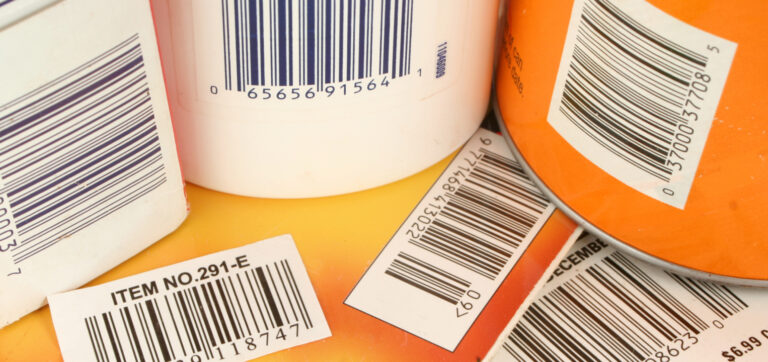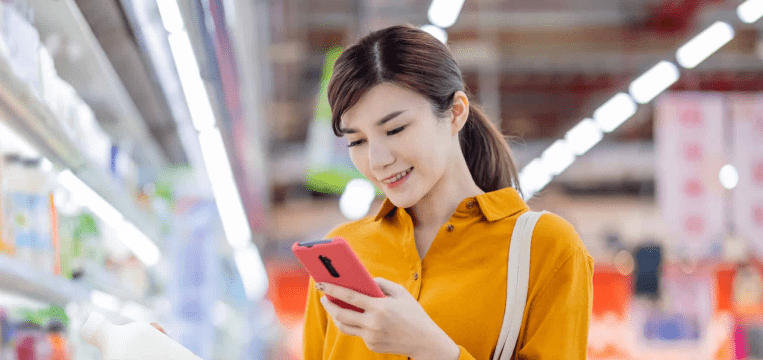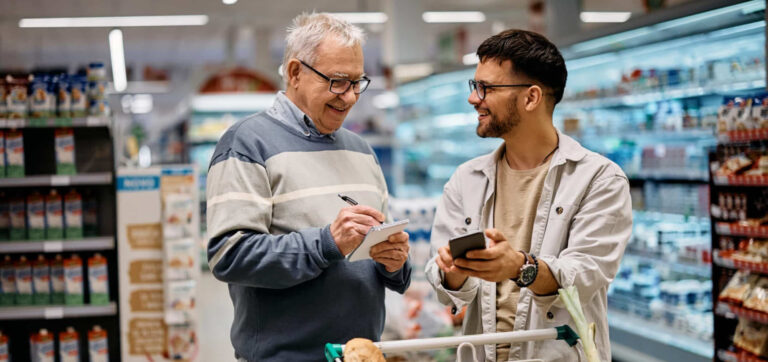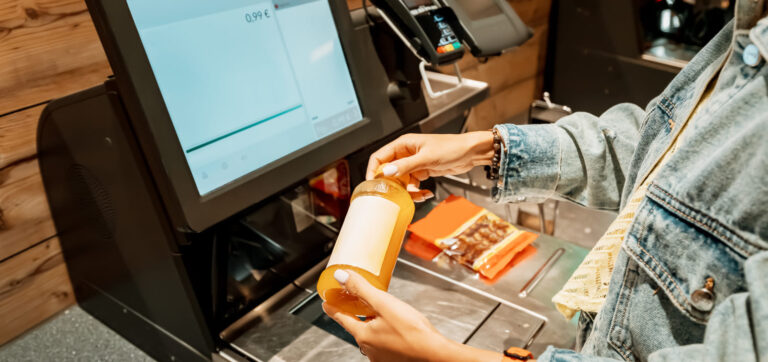In 1974, a simple barcode scan of Wrigley’s gum at an Ohio supermarket marked the beginning of a new era in retail. Barcodes have stood the test of time to become pivotal to enhancing the customer experience and operational efficiency. As we move into the future of retail, advanced technologies such as augmented reality are increasingly integrated with traditional barcode systems. This combination sets the stage for a transformative shift in how businesses engage with consumers and manage inventory.
Over the years, a large number of specialized barcode symbologies have sprung up. This allows retailers to pick and choose the code types that best fit their unique needs.
The difference between using 1D and 2D barcodes
Understanding the difference between 1D and 2D barcodes is paramount for making an informed decision.
1D barcodes encode information in a series of lines. They are perfect for basic tasks like identifying products and checking prices quickly at the point of sale. However, they can only store a limited amount of information.
In contrast, 2D barcodes can hold much more data, including product details and links to websites, images, and more – all contained in a compact square or rectangle. This makes 2D barcodes very versatile: The applications range from providing detailed product information to engaging with customers through interactive content.
Knowing when to use each barcode type can help businesses enhance their operations and customer interactions.
Which barcode is the right for your business?
Choosing the correct barcode for your retail business depends on your specific requirements, including the nature of your products, the scale of your operations, and how you interact with customers.
Here’s a brief rundown of standard barcodes used in retail and what they offer:
UPC (Universal Product Code)
The UPC is the default product code for North American retailers. UPC codes are perfect for fast checkouts and easy inventory management and are widely supported by retail technology solutions. It holds 12 digits.
EAN (European Article Number)
EAN codes are very similar to UPCs, but hold 13 digits. They are the standard product barcode outside North America. EANs are a must for businesses selling internationally.
Code 93
Known for their ability to encode the entire ASCII character set, the Code 93 symbology is versatile and compact. These characteristics make it suitable for inventory management and logistics. A very common use case is retail package tracking.
GS1 DataBar
Developed for items that are too small for traditional barcodes or have unconventional shapes, GS1 DataBars are often found on fresh foods. They can carry information such as weight, batch numbers, and expiry dates, facilitating better inventory and sales management for perishable goods.
QR Codes
This symbology is great for interactive customer engagement, as QR codes can store website URLs, promotional content, and much more. As such, QR Codes offer a rich source of information beyond the purchase.
Data Matrix
Suitable for small items and products requiring substantial data storage within a tiny footprint, Data Matrix codes are a versatile solution for detailed labeling.
Innovative uses of barcodes in retail
Barcodes have played a crucial role in transforming the way goods are tracked, stored, and sold. Today, they are used for far more than just cashier checkout and inventory management.
Let’s explore some innovative ways barcodes are utilized in retail.
Scan & Go
Scan & Go is a mobile self-checkout approach that offers multiple advantages for both shoppers and retailers.
At its core, Scan & Go allows customers to use their smartphones to scan items’ barcodes as they shop. Typically, they can pay immediately with their phone, without having to wait in a queue at the checkout.
This system doesn’t just slash wait times, but enhances the whole customer experience by allowing for a more flexible and personalized shopping journey.
From the retailer’s perspective, Scan & Go can reduce labor costs, as fewer staff are needed for checkout processes. Furthermore, the data collected from Scan & Go transactions provides valuable insights into consumer behavior. With this information, retailers can optimize store layouts, barcode inventory management, and targeted marketing strategies.
This data-driven approach can lead to more efficient operations and a better understanding of customer preferences, driving sales and improving customer satisfaction.
Augmented reality (AR) barcodes
Augmented reality (AR) barcodes offer an innovative and creative way for retail businesses to engage with consumers and enhance the shopping experience.
When scanned with a smartphone, the data in these 2D barcodes can be used for AR overlays: Digital information is added to the live camera view on the screen. They can thus provide customers with interactive content such as product details, reviews, and even virtual try-on options.
For retailers, AR barcodes represent a powerful tool to bridge the gap between offline and online shopping. In particular, it enables them to deliver detailed product information and personalized recommendations directly to customers on the shop floor.
This not only helps them make informed decisions, but also increases customer engagement and satisfaction.
The applications of AR barcodes don’t end there. They can be used to create gamified shopping experiences, encouraging customers to explore more of the store and discover products they might not have otherwise considered.
By leveraging AR barcodes, retail businesses can enhance in-store navigation, promote products more effectively, and gather insights into customer preferences and behavior.
The importance of barcode scanning software for retail
Transitioning from traditional handheld scanners to advanced smartphone-based barcode scanners is an important step for retailers looking to modernize the customer experience. While handheld scanners have been a backbone of retail operations for decades, smartphone-based scanning software offers greater efficiency and versatility.
Mobile barcode scanners are not just about reading barcodes swiftly and accurately – they are about improving the whole retail experience. Designed to seamlessly integrate into existing systems, the Scanbot Barcode Scanner SDK makes adoption effortless, ensuring that businesses can transition smoothly without disrupting their operations.
The advantage of smartphone-based scanning is that these are powerful, multifunctional, but also familiar devices: They can do far more than just scan, yet are very easy to use.
With the capability to unlock a wealth of information with a simple QR code scan or manage inventory with precision using GS1 DataBar codes, smartphone scanners easily adapt to the multifaceted demands of modern retail.
This adaptability extends to enhancing customer interactions. With an employee scanning app, sales personnel can provide immediate product information and stock availability, taking the shopping experience to new levels.
The widespread availability of smartphones and the intuitive nature of mobile applications mean that training staff is simpler and more cost-effective than ever before.
Explore the transformative potential of smartphone-based barcode scanning in our booklet – and discover how you can not only optimize your processes and keep your customers satisfied, but also position your business at the forefront of retail innovation.



